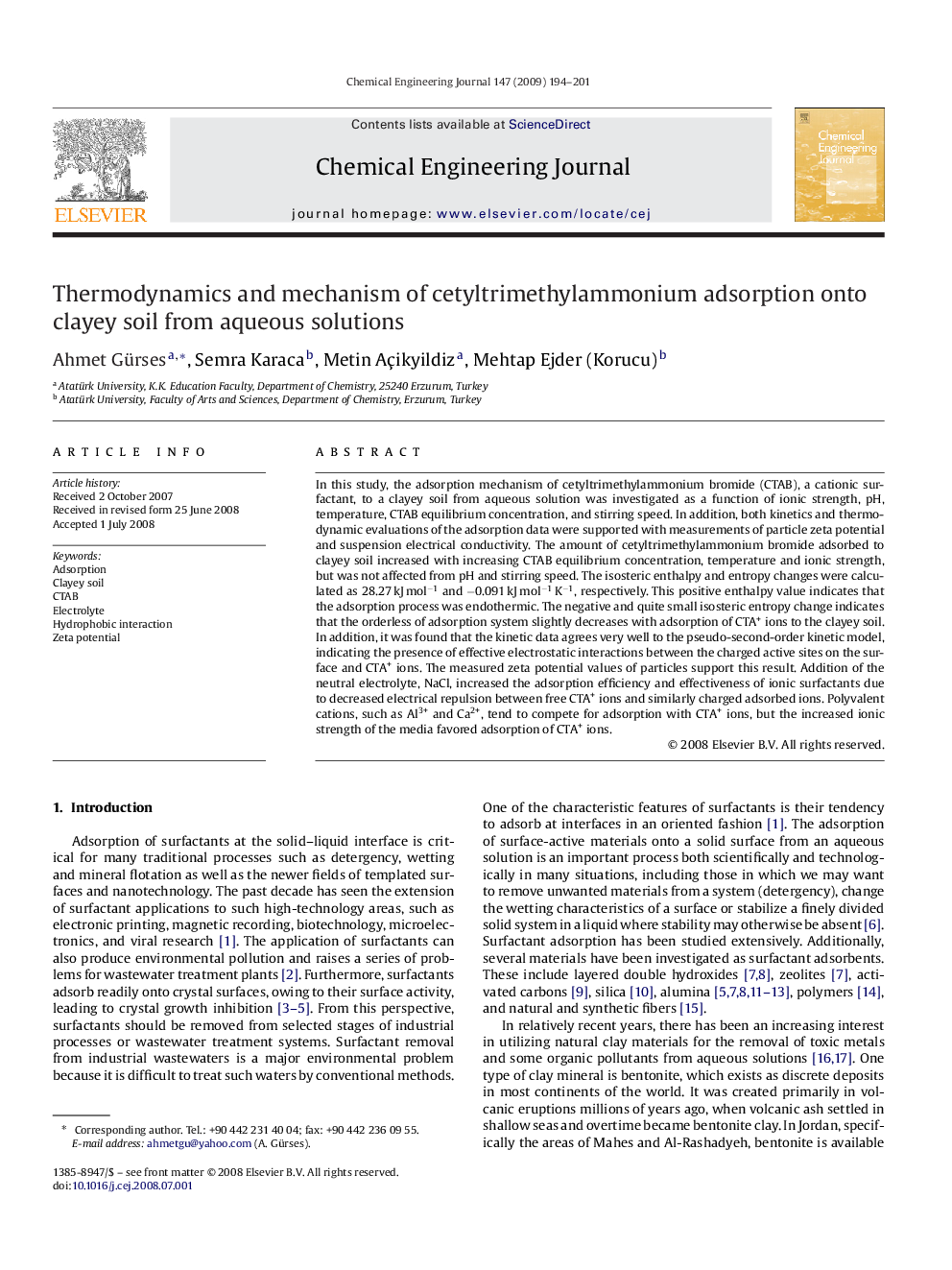| Article ID | Journal | Published Year | Pages | File Type |
|---|---|---|---|---|
| 152545 | Chemical Engineering Journal | 2009 | 8 Pages |
In this study, the adsorption mechanism of cetyltrimethylammonium bromide (CTAB), a cationic surfactant, to a clayey soil from aqueous solution was investigated as a function of ionic strength, pH, temperature, CTAB equilibrium concentration, and stirring speed. In addition, both kinetics and thermodynamic evaluations of the adsorption data were supported with measurements of particle zeta potential and suspension electrical conductivity. The amount of cetyltrimethylammonium bromide adsorbed to clayey soil increased with increasing CTAB equilibrium concentration, temperature and ionic strength, but was not affected from pH and stirring speed. The isosteric enthalpy and entropy changes were calculated as 28.27 kJ mol−1 and −0.091 kJ mol−1 K−1, respectively. This positive enthalpy value indicates that the adsorption process was endothermic. The negative and quite small isosteric entropy change indicates that the orderless of adsorption system slightly decreases with adsorption of CTA+ ions to the clayey soil. In addition, it was found that the kinetic data agrees very well to the pseudo-second-order kinetic model, indicating the presence of effective electrostatic interactions between the charged active sites on the surface and CTA+ ions. The measured zeta potential values of particles support this result. Addition of the neutral electrolyte, NaCl, increased the adsorption efficiency and effectiveness of ionic surfactants due to decreased electrical repulsion between free CTA+ ions and similarly charged adsorbed ions. Polyvalent cations, such as Al3+ and Ca2+, tend to compete for adsorption with CTA+ ions, but the increased ionic strength of the media favored adsorption of CTA+ ions.
